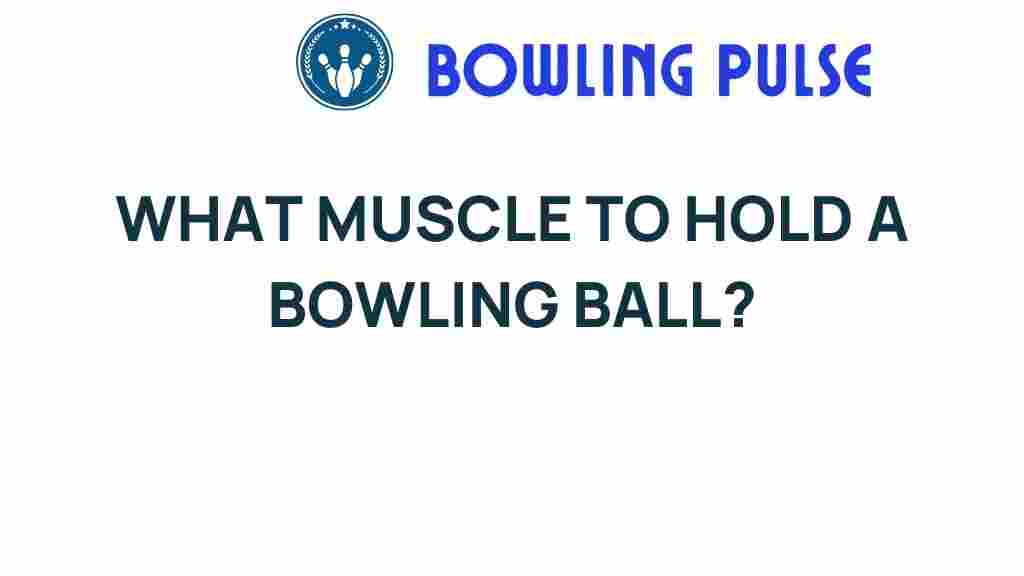Unraveling the Secrets: Which Muscle Holds the Key to Bowling Success? – Understanding Bowling Technique
Bowling is often perceived as a leisurely activity, but for serious bowlers, mastering the sport requires a deep understanding of bowling technique, physical conditioning, and the mechanics of the body. To achieve optimal performance, one must recognize the importance of various muscle groups and how they contribute to overall sports performance. In this article, we will delve into the muscles that play a crucial role in bowling, explore effective strength training routines, and provide essential bowling tips for improving your game.
Understanding Key Muscle Groups in Bowling
The mechanics of bowling involve a coordinated effort from multiple muscle groups. Understanding which muscles are engaged during your bowling motion can help you fine-tune your bowling form and enhance your overall performance. Here are the primary muscle groups involved:
- Core Muscles: Your core stabilizes your body during the approach and delivery phases of bowling. Strong core muscles allow for better balance and power transfer.
- Leg Muscles: The quadriceps, hamstrings, and calves are crucial for generating the force needed during your approach and slide.
- Shoulders and Arms: These muscles are responsible for the arm mechanics involved in releasing the ball. Strong shoulders and arms help maintain a smooth and controlled delivery.
- Grip Strength: The muscles in your hands and forearms are essential for maintaining a secure grip on the bowling ball, which is vital for control and accuracy.
The Importance of Strength Training for Bowlers
To enhance your sports performance on the lanes, incorporating a targeted strength training program is essential. Here’s how to effectively train the muscle groups that contribute to your bowling success:
Core Strength Training
Building core strength is critical for stability and balance during your approach. Here are some effective exercises:
- Planks: Hold a plank position to strengthen the entire core.
- Russian Twists: Sit on the floor, lean back slightly, and twist your torso to touch the ground beside you.
- Medicine Ball Throws: Use a medicine ball to mimic the bowling motion, throwing it against a wall to engage your core.
Leg Strength Training
Strong legs are necessary for an explosive approach. Consider these exercises:
- Squats: Perform bodyweight squats or add weights to build strength in your quadriceps and hamstrings.
- Lunges: Forward and backward lunges help improve leg strength and balance.
- Calf Raises: Stand on the edge of a step and raise your heels to build calf strength.
Upper Body Strength Training
Focus on your shoulders and arms with these exercises:
- Shoulder Press: Use dumbbells or a barbell to strengthen your shoulders.
- Bicep Curls: Strengthening your biceps will help with your arm mechanics during the release.
- Tricep Extensions: Strong triceps are essential for a powerful follow-through.
Bowling Tips for Improving Your Performance
To complement your strength training, here are some essential bowling tips to improve your technique and form:
- Focus on Your Approach: A consistent approach is vital. Practice your steps to ensure fluidity.
- Maintain a Relaxed Grip: Don’t squeeze the ball too tightly. A relaxed grip allows for better release.
- Follow Through: Ensure your arm extends fully after releasing the ball to maintain accuracy and power.
- Visualize Your Shot: Mental preparation can greatly enhance your performance. Visualize your shot before taking it.
Step-by-Step Process for Perfecting Your Bowling Form
Perfecting your bowling form is a combination of practice and understanding the mechanics involved. Here’s a step-by-step guide:
1. Stance and Grip
Start with a comfortable stance. Your feet should be shoulder-width apart, and the grip should be firm but relaxed. Ensure that your fingers fit snugly in the holes of the bowling ball.
2. The Approach
Begin your approach with a smooth motion. Focus on your footwork and maintain balance throughout the steps. A common approach consists of three to five steps depending on your style.
3. The Release
As you reach the foul line, begin to swing your arm back, allowing for a natural motion. As you bring the ball forward, release it smoothly while maintaining your grip strength. Aim to have a clean release without excessive force.
4. Follow Through
After releasing the ball, your arm should continue its motion upwards. This follow-through is essential for accuracy and helps maintain the correct arm mechanics.
Troubleshooting Common Issues
Even with the best training, bowlers can encounter performance issues. Here are some common problems and solutions:
- Inconsistent Ball Release: Focus on your grip and ensure it remains relaxed. Practice your release to develop muscle memory.
- Loss of Balance: Work on your core stability and practice your approach to improve balance.
- Weak Follow-Through: Ensure you’re fully extending your arm after release. Practice with a coach or use video analysis to improve this aspect.
Conclusion: The Path to Bowling Success
Understanding the muscle groups that contribute to your bowling technique is essential for achieving success in the sport. By focusing on strength training, refining your bowling form, and implementing effective bowling tips, you can significantly enhance your performance on the lanes. Remember, it’s a combination of physical conditioning and mental preparation that leads to excellence in bowling.
For more resources on athletic training and bowling techniques, check out this comprehensive guide. Whether you’re a beginner or a seasoned bowler, the key to success lies in understanding your body, practicing diligently, and continually seeking improvement.
As you embark on your journey to bowling excellence, keep these insights in mind, and you’ll be well on your way to unlocking your full potential in the sport.
This article is in the category Techniques and created by BowlingPulse Team
